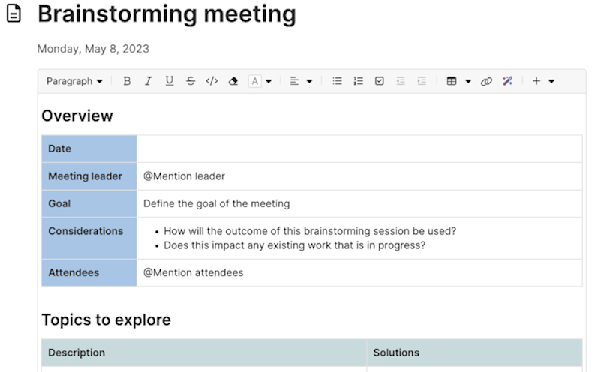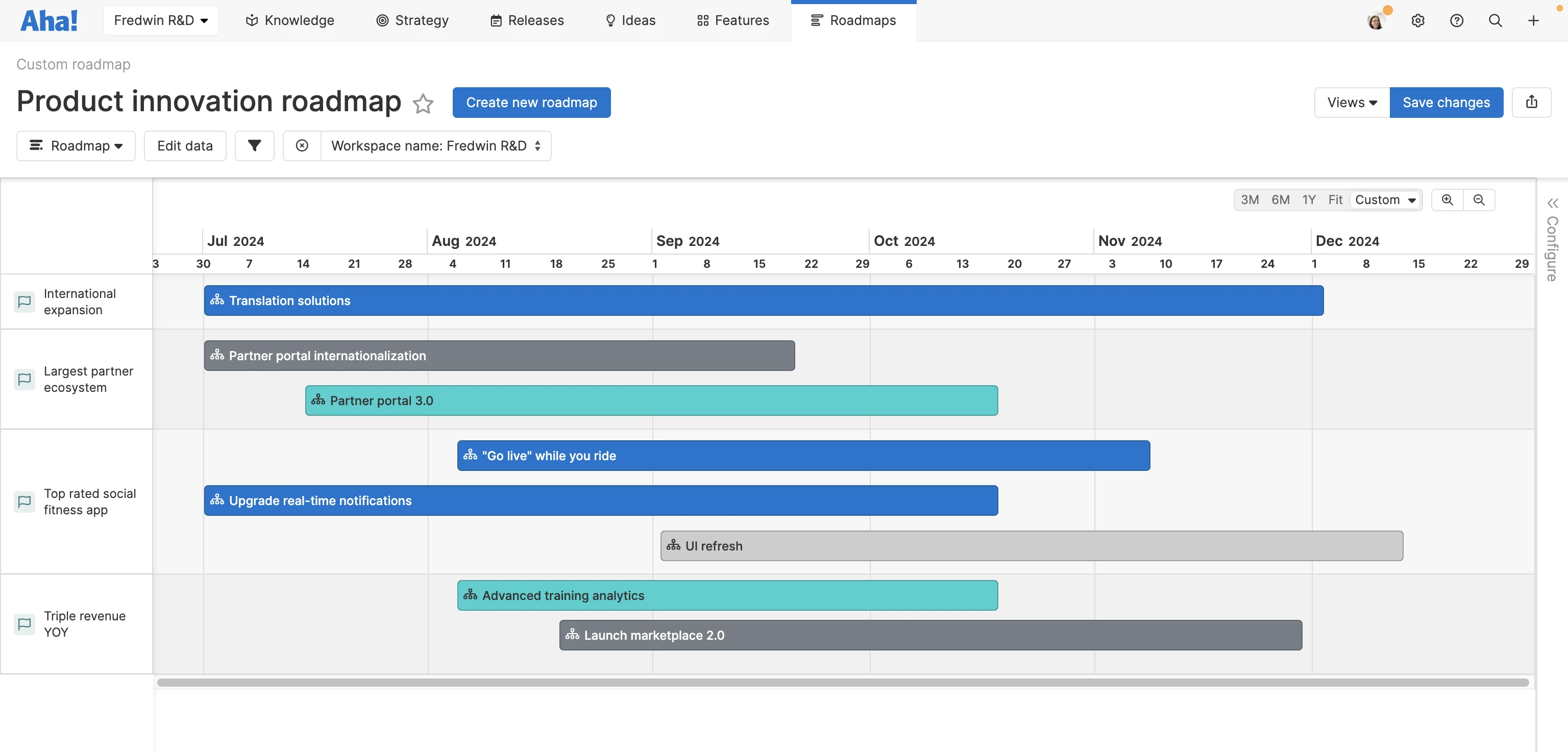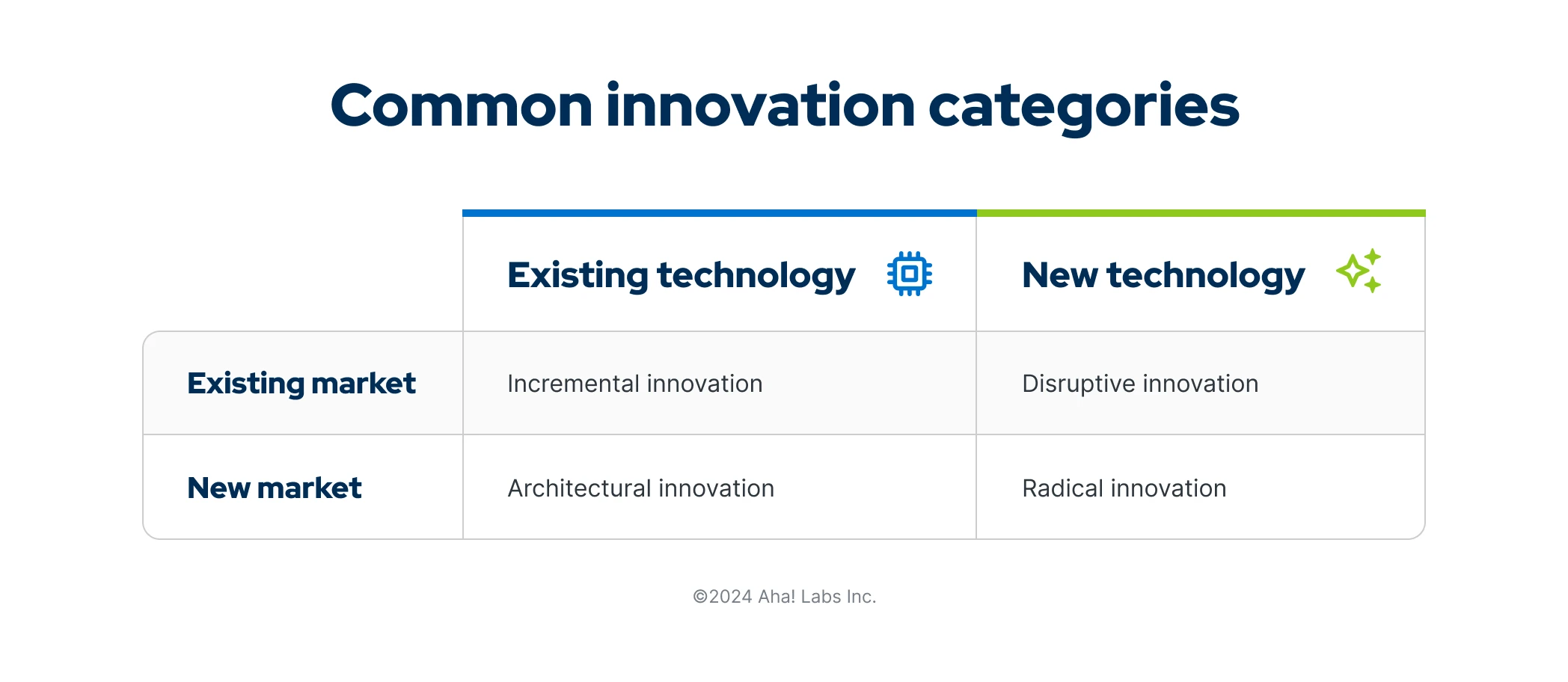What is an innovation roadmap?
Last updated: April 2024
An innovation roadmap is essential for building a competitive advantage. It is a visual plan for how a company will achieve its innovation strategy — outlining strategic goals, initiatives, and structured activities that will enable teams to drive and support business growth.
The purpose of an innovation strategy is more than just identifying and implementing new ideas. Innovation strategies are centered around value delivery, organizational resiliency, and market leadership. The world’s largest companies make innovation a critical part of their business model — typically through research and development efforts. But small- and mid-sized organizations can also benefit from being intentional about adopting new tools, processes, or techniques.
Map out innovation efforts in Aha! Roadmaps. Sign up for a free trial.
Jump ahead to any section in this guide:
This is a custom roadmap built in Aha! Roadmaps.
There are many different ways that companies can innovate and many innovation methods intermingle in practice. This guide offers definitions around innovation strategy, tips for establishing an innovation process, and best practices to help you create an innovation roadmap that is flexible and actionable.
Related:
Why are innovation roadmaps so important?
Innovation is leadership in action. Regardless of size or industry, the most successful companies make ongoing innovation a priority to ensure differentiation in market. Innovation programs typically require buy-in from stakeholders, dedicated resources, and effort across business areas. These are large-scale endeavors that require upfront planning and careful monitoring to succeed. Even so, many companies struggle to innovate well.
The advantage of an innovation roadmap is that you can use it to steer both initial innovation management and the implementation of the output of those efforts — regardless of what type of innovation strategy you pursue. Let's take a closer look at the four main categories of innovation:
Type of innovation | Definition | Example |
Incremental innovation | Incremental innovation refers to a series of improvements to a company’s products or services over an extended period of time. These improvements are usually low-cost and build upon current offerings. The intention is to satisfy existing customers with new offerings. | Coca-Cola offers a well-known example of incremental innovation by regularly introducing new flavors of cola. Extensions of the classic beverage include cherry, lime, and zero sugar flavors — all intended to help the brand stay relevant and meet evolving consumer expectations. |
Architectural innovation | Architectural innovation refers to reconfiguring components or technologies of existing products so that a company can enter a new market. Like incremental innovation, architectural innovation is a lower-cost approach to innovation since you are capitalizing on existing technology — but there is still risk since you are entering a new market. Validating consumer demand is imperative. | An example of architectural innovation is Canon, which redesigned massive photocopiers into a desktop size. This helped the product appeal to individual buyers instead of institutions. |
Disruptive innovation | Disruptive innovation refers to challenging an existing market by delivering more value to customers. The intention is to focus on customer needs through a combination of technology, pricing, and services. Business models for disruptive innovation include entering the market at the low-end and forcing competitors to prioritize profit margins and move “upstream” or by entering an existing market that is not being served adequately by competitors. | Netflix is the most commonly cited example of disruptive innovation — low-end market encroachment that grew upmarket over time. |
Radical innovation | Radical innovation refers to creating a new market with a breakthrough solution. The initial insight might be quite simple, but following through to delivery is a major investment. Radical innovation is often the result of applying new knowledge or technology against a new concept. | Medical industries offer many examples of radical innovation, with new biotechnologies such as mRNA vaccines. |
In addition to the four strategies above, there are some other common types of innovation:
Business model innovation: Changing an organization's value proposition and operating model.
New channel innovation: New methods to acquire and retain customers, either through marketing, sales, or partnerships.
Organizational innovation: Investing in human resources either through changing internal reporting structures, retraining existing teams, or hiring new talent.
Process innovation: Improving internal processes such as production, delivery, or customer service.
Product innovation: Improving the performance or features of existing products or creating new ones.
Technology innovation: Creating or implementing new technologies that enable faster value delivery.
Related:
What is the process for creating an innovation roadmap?
The process for creating an innovation roadmap follows the same roadmapping best practices as other types of roadmaps. It is always a good idea to start by prioritizing the greatest customer and employee needs. Beyond that, here are some of the most important questions to ask when creating an innovation roadmap:
Have we thoroughly identified and analyzed our strategic inputs?
Are we in agreement about what we plan to deliver?
What are our parameters for what we will include or not include on our innovation roadmap?
Do we have internal commitment by management for the resources needed?
How will we integrate our innovation plans with the organization's operational plans?
What is our process for communicating status, reviewing progress, and identifying risks?
You want to set a clear strategy, gain stakeholder involvement, create organized work streams, and identify a method for sharing updates. Because of the complexity involved, many companies realize that they need a purpose-built roadmapping tool that allows you to set strategy, build plans, manage work, and report on progress from the same system.
Templates to get started
Choose from a rich library of more than 100 purpose-built templates — handcrafted by product development experts at Aha! — to showcase your best thinking. Some of our favorites for deciding which product innovations to pursue include:
Competitive analysis template: See how you stack up against competitors.
Decision tree: Consider potential decisions and predict outcomes.
Gap analysis: Find the gaps between where you are now and where you want to be.
Opportunity canvas: Explore opportunities for innovation and new product features.
Aha! record map: If you use Aha! software, map out relationships between work types.
The benefit of using templates in Aha! software is that you can connect them directly to planned work and follow progress through the entire product development process.




